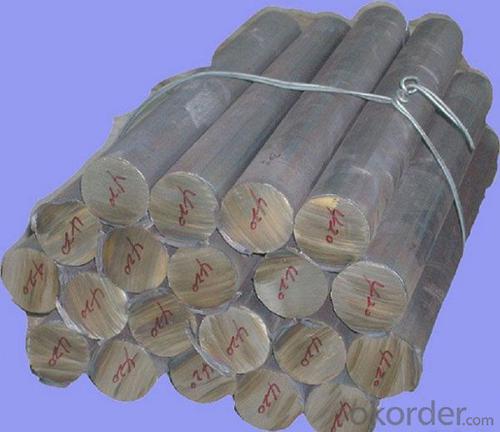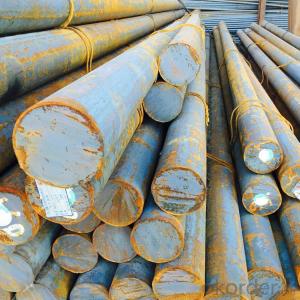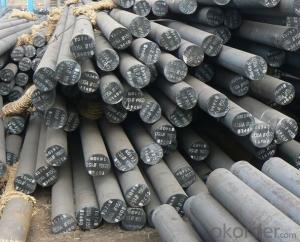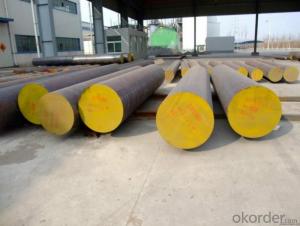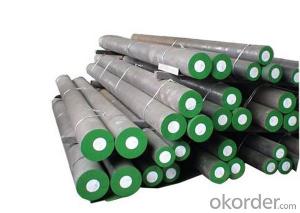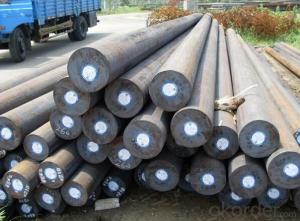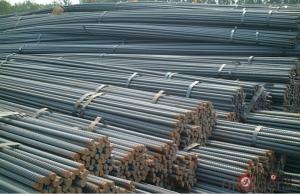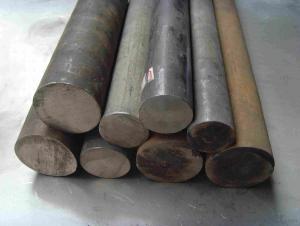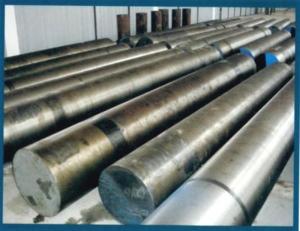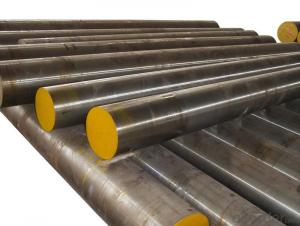Din 1.2510 Steel K460 Material Steel Plate
- Loading Port:
- China main port
- Payment Terms:
- TT OR LC
- Min Order Qty:
- 30 m.t.
- Supply Capability:
- 10000 m.t./month
OKorder Service Pledge
OKorder Financial Service
You Might Also Like
Specification
Din 1.2510 Steel K460 Material Steel Plate
Product information:
Specifications
MOQ:10MT
Delivery time:60days
Dimention:Dia 14-500mm
Steel Bar AISI O1, DIN 1.2510, GB 9CrWMn ,JIS SKS3
9CrWMn:Competitive price on a FOB basis
Cold Work Mould Steel
AISI O1,DIN 1.2510, GB 9CrWMn,JIS SKS3
1) Chemicial composition: C=0.85~0.95, Si=0.20~0.40, Mn=1.00~1.30, Cr=0.40~0.60, W=0.40~0.60, V=0.10~0.20.
2) Delivery condition: EAF or ESR, hot rolled or forged, black or machined surface, annealed, hardness: HBS≤228.
3)Usually specification:(customer requested size)
Thickness:20~500mm
Width:500~1200mm
Round Bar Size :50~500mm
Length:1000~6000mm
4) Application: used for making mini surface and shape complex cold punching moulds.
5)Payment terms:30% deposit,balance against LC at sight or TT
| Equivalent grades | GB | DIN | AISI | JIS | |||||
| 9CrWMn | 1.251 | O1 | SKS3 | ||||||
| Chemical Composition | C | Si | Mn | Cr | P | S | V | W | |
| 0.90-1.05 | 0.15-0.35 | 1.00-1.20 | 0.50-0.70 | 0.03MAX | 0.03MAX | 0.05-0.15 | 0.50-0.70 | ||
| Available size | Round Bar | Diameter | Length | ||||||
| 10-380mm | 2000-5800mm | ||||||||
| Flat Bar | Thickness | Width | Length | ||||||
| 12-500mm | 60-900mm | 2000-5800mm | |||||||
| Surface condition | Black surface/ Grinded/ Machined | ||||||||
| Annealed hardness | HB210MAX | ||||||||
| Characteristics | Din 1.2510 K460 hot rolled alloy steel plate | ||||||||
| High wear resistance | |||||||||
| High surface hardness after tempering; | |||||||||
| Good dimensional stability during heat treatment; | |||||||||
| Good machinability | |||||||||
| Applications | Din 1.2510 K460 hot rolled alloy steel plate | ||||||||
| Cutting and punching tools | |||||||||
| shear knives, thread rolling tools | |||||||||
| measuring instruments, platinum using molds | |||||||||
| Heat treatment | Hardening | ||||||||
| Harden from a temperature of 780-820oC followed by oil, warm bath (180-220oC) quenching. Hardness after quenching is 64 HRC. | |||||||||
| Tempering | |||||||||
| Tempering temperature: See the table bellow. | |||||||||
| Tempering Temperature (oC) vs. Hardness (HRC) | |||||||||
| 100°C | 200°C | 300°C | 400°C | 500°C | |||||
| 64 | 61 | 56 | 51 | 44 | |||||
Product show
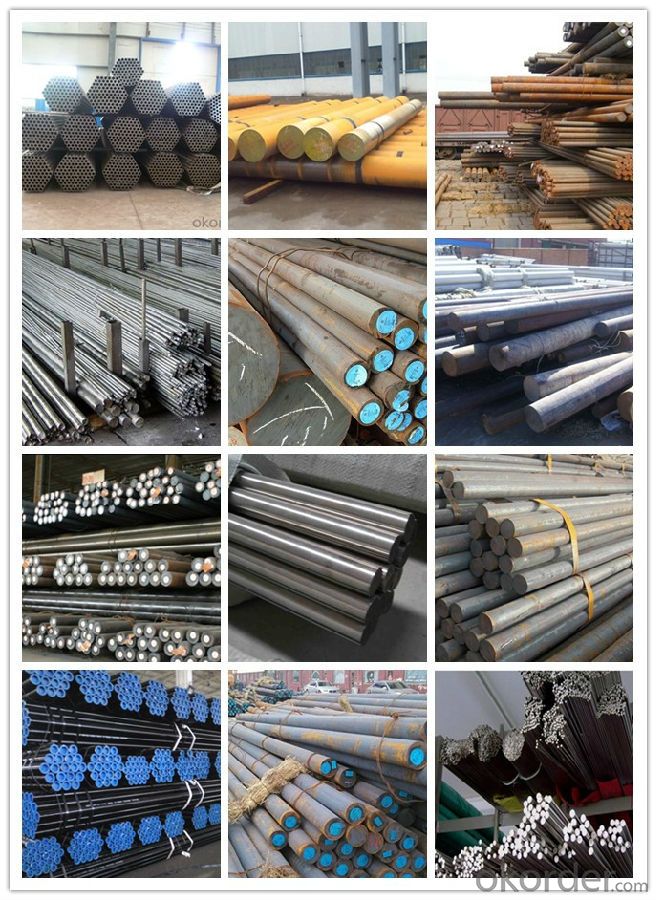
Workshop show
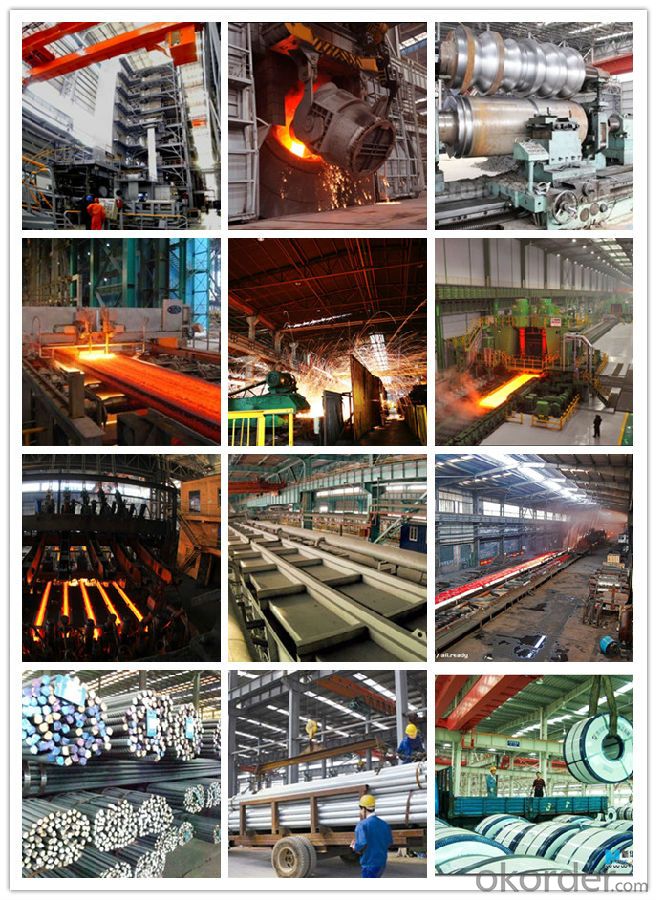
Our service:
-High manufacturing accuracy
-High strength
-Small inertia resistance
-Strong heat dissipation ability
-Good visual effect
-Reasonable price
Chose happens because of quality, then price, We can give you both.Additionally, we can also offer professional products inquiry, products knowledge train(for agents), smooth goods delivery, exellent customer solution proposals.Our service formula: good quality+good price+good service=customer's trust
SGS test is available, customer inspection before shipping is welcome, third party inspection is no problem.
If you need the sample, please feel free to let me know. Any question, we will contact you ASAP!
- Q: How does stainless steel contribute to the production of medical implants?
- Stainless steel contributes to the production of medical implants by providing a highly durable and corrosion-resistant material that is compatible with the human body. It is used in various implants such as joint replacements, dental implants, and surgical instruments due to its strength, biocompatibility, and ability to withstand sterilization processes.
- Q: How does special steel perform in extreme heat conditions?
- Special steel performs exceptionally well in extreme heat conditions. It has excellent heat resistance properties, enabling it to maintain its strength and structural integrity even at high temperatures. This makes it highly suitable for applications that involve exposure to extreme heat, such as in industrial furnaces, jet engines, and power plants. Its ability to resist thermal deformation and retain its mechanical properties ensures optimal performance and safety in such demanding environments.
- Q: Can special steel be used in marine environments?
- Yes, special steel can be used in marine environments. Special steel alloys, such as stainless steel or corrosion-resistant steel, are specifically designed to withstand the harsh conditions of saltwater and other corrosive elements found in marine environments. These alloys have excellent resistance to corrosion, erosion, and pitting, making them suitable for various marine applications, including shipbuilding, offshore structures, and marine equipment.
- Q: What are the common challenges in heat treating special steel?
- Heat treating special steel poses a range of difficulties. One of the main challenges is to attain the desired hardness and strength while maintaining the desired microstructure. Special steels often necessitate specific heat treatment processes, such as quenching and tempering, to achieve the desired mechanical properties. However, the high alloy content in these steels can make it challenging to achieve uniform heat distribution and control the cooling rate during quenching, resulting in inconsistent hardness and potential distortion. Another obstacle in heat treating special steel is managing residual stresses. During the heating and cooling process, differential thermal expansion and contraction can cause stress to accumulate within the steel, potentially leading to cracking or distortion. To minimize these stresses, it is crucial to employ proper heat treatment techniques, such as preheating and controlled cooling rates. Special steels also require stringent cleanliness standards, as impurities or non-metallic inclusions can adversely affect their mechanical properties. Ensuring the cleanliness of the steel prior to heat treatment can be difficult and may entail additional steps, such as degreasing, pickling, or using protective atmospheres during heat treatment. Furthermore, some special steels are highly susceptible to overheating, which can result in grain growth and the loss of desired properties. To prevent overheating and ensure consistent outcomes, precise temperature control and monitoring are essential. Finally, heat treatment of special steels must take into account specific time-temperature transformation (TTT) and continuous cooling transformation (CCT) characteristics. Understanding and adhering to the appropriate heating and cooling cycles are crucial for achieving the desired microstructure and properties. In conclusion, the challenges in heat treating special steel include achieving the desired hardness and microstructure, managing residual stresses, ensuring cleanliness, preventing overheating, and adhering to specific time-temperature transformation characteristics. Overcoming these challenges necessitates expertise, precise control, and strict adherence to heat treatment protocols.
- Q: Can special steel be recycled?
- Yes, special steel can be recycled. Special steel, also known as alloy steel, is a type of steel that contains additional elements such as chromium, nickel, or molybdenum to enhance its properties. These additional elements do not hinder the recyclability of the steel. The recycling process for special steel is similar to that of regular steel. The steel is collected from various sources, such as scrap metal yards, demolition sites, or end-of-life products. It is then processed to remove impurities, sorted, and shredded into smaller pieces. The shredded steel is melted in a furnace to form molten steel, which is then cast into new products or used as raw material for manufacturing processes. Recycling special steel offers several benefits. Firstly, it helps conserve natural resources as it reduces the need for new steel production. Secondly, it reduces energy consumption and greenhouse gas emissions associated with steel manufacturing. Additionally, recycling steel helps decrease waste generation and promotes a circular economy by utilizing existing materials. Overall, special steel, like any other type of steel, can be recycled effectively, contributing to environmental sustainability and resource conservation.
- Q: How is the tensile strength of special steel measured?
- The tensile strength of special steel is typically measured using a standardized test called a tensile test. In this test, a sample of the steel is subjected to controlled tensile forces until it reaches its breaking point. The amount of force required to break the sample is then recorded as the tensile strength of the steel.
- Q: What are the different surface finishing techniques for special steel?
- Some of the different surface finishing techniques for special steel include electroplating, powder coating, passivation, etching, and polishing.
- Q: What are the requirements for special steel used in metalworking tools?
- Special steels used in metalworking tools require specific characteristics and qualities to ensure their effectiveness and durability in demanding applications. Some of the key requirements for special steel used in metalworking tools include: 1. High hardness: Special steels used in metalworking tools need to have a high hardness level to resist wear and deformation. This allows the tools to maintain their sharpness and cutting edge for extended periods, resulting in efficient and precise machining operations. 2. Excellent toughness: Metalworking tools are subjected to high impact and stress loads. Therefore, special steels used in these tools must possess excellent toughness to withstand the forces encountered during cutting, drilling, or shaping operations. This toughness prevents the tool from fracturing or chipping, ensuring a longer tool life. 3. Good heat resistance: Metalworking processes generate significant heat due to friction, which can compromise the performance of the tool. Special steels used in metalworking tools should exhibit good heat resistance to minimize the risk of thermal damage, such as softening or loss of hardness, even at elevated temperatures. 4. Wear resistance: The ability to resist wear is crucial for metalworking tools as they are constantly in contact with the workpiece. Special steels used in these tools should have high wear resistance to maintain their cutting performance and dimensional accuracy over time. 5. Corrosion resistance: Metalworking tools are often exposed to harsh environments, including coolants, lubricants, and corrosive elements. Therefore, special steels used in metalworking tools should possess good corrosion resistance to prevent rusting and degradation, ensuring the longevity and reliability of the tools. 6. High dimensional stability: Special steels used in metalworking tools must exhibit high dimensional stability to ensure consistent performance. This stability allows the tools to maintain their shape and size under varying operating conditions, resulting in accurate and repeatable machining processes. 7. Machinability: Special steels used in metalworking tools should be machinable, meaning they can be easily processed and shaped into the desired tool design. This characteristic allows for cost-effective manufacturing, reducing production time and expenses. Meeting these requirements ensures that special steel used in metalworking tools is capable of withstanding the demanding conditions encountered in various metal fabrication and machining operations, providing efficient cutting, shaping, and drilling capabilities while maintaining longevity and performance.
- Q: What are the different methods of analyzing the microstructure of special steel?
- There are several methods available for analyzing the microstructure of special steel. These methods involve the examination and characterization of the steel at a microscopic level to understand its composition, grain structure, and other features. Some of the commonly used methods include: 1. Optical Microscopy: This method involves the use of light microscopy to observe the microstructure of special steel. It allows for the identification of different phases, grain boundaries, inclusions, and other features. Optical microscopy provides valuable information about the size, distribution, and morphology of different constituents in the steel. 2. Scanning Electron Microscopy (SEM): SEM is a powerful technique that uses a high-energy electron beam to analyze the microstructure of special steel. It provides detailed information about the surface topography, morphology, and elemental composition of the steel. SEM is particularly useful for studying the presence of precipitates, segregation, and other microstructural defects. 3. Transmission Electron Microscopy (TEM): TEM is an advanced technique that allows for the analysis of the microstructure at a much higher resolution compared to optical and SEM methods. It involves the transmission of electrons through a thin sample, which provides information about the crystal structure, dislocations, and other fine details of the microstructure. TEM is especially useful for studying the nanostructures and interfaces in special steel. 4. X-ray Diffraction (XRD): XRD is a non-destructive method that uses X-rays to analyze the crystal structure and phase identification of special steel. It provides information about the crystallographic orientation, grain size, and phase composition of the steel. XRD is widely used for analyzing the phase transformations and residual stress in special steel. 5. Electron Backscatter Diffraction (EBSD): EBSD is a technique that combines SEM with crystallographic analysis. It provides information about the crystal orientation, texture, and grain boundaries in special steel. EBSD is useful for studying the deformation mechanisms, recrystallization, and grain growth in the steel. 6. Energy Dispersive X-ray Spectroscopy (EDS): EDS is a technique that is often used in conjunction with SEM or TEM to analyze the elemental composition of special steel. It provides information about the presence and distribution of different chemical elements in the microstructure, allowing for the identification of phases and the characterization of inclusions. These methods, along with others, provide valuable insights into the microstructure of special steel, enabling researchers and engineers to understand its properties, performance, and potential applications.
- Q: How does special steel perform in high-wear applications?
- Special steel is specifically designed to withstand high-wear applications due to its exceptional hardness, toughness, and resistance to deformation. It exhibits superior performance by maintaining its shape, strength, and durability even under extreme conditions such as friction, abrasion, and impact. This makes it an ideal choice for industries where wear resistance is crucial, such as automotive, construction, mining, and manufacturing.
Send your message to us
Din 1.2510 Steel K460 Material Steel Plate
- Loading Port:
- China main port
- Payment Terms:
- TT OR LC
- Min Order Qty:
- 30 m.t.
- Supply Capability:
- 10000 m.t./month
OKorder Service Pledge
OKorder Financial Service
Similar products
Hot products
Hot Searches
Related keywords



